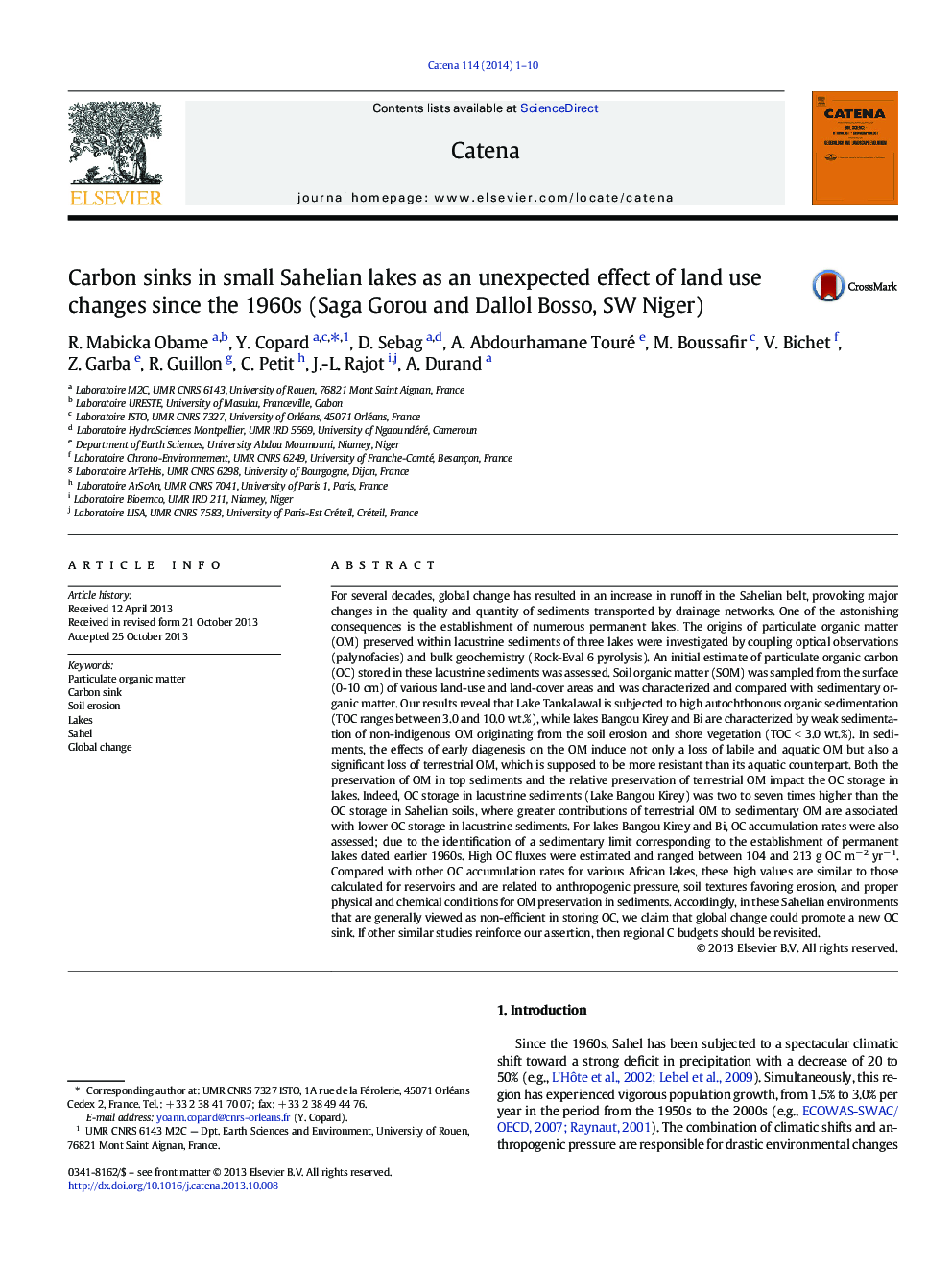| Article ID | Journal | Published Year | Pages | File Type |
|---|---|---|---|---|
| 4571486 | CATENA | 2014 | 10 Pages |
•We investigate the origin of sedimentary OM in Sahelian lakes recently settled.•We estimate OC storage in soils and lakes.•Sahelian lakes can be viewed as a new organic carbon sink.•Accumulation rate of OC in lakes are close to those estimated for artificial reservoirs.•A possible revisit of C budget in Sahelian environment is evoked.
For several decades, global change has resulted in an increase in runoff in the Sahelian belt, provoking major changes in the quality and quantity of sediments transported by drainage networks. One of the astonishing consequences is the establishment of numerous permanent lakes. The origins of particulate organic matter (OM) preserved within lacustrine sediments of three lakes were investigated by coupling optical observations (palynofacies) and bulk geochemistry (Rock-Eval 6 pyrolysis). An initial estimate of particulate organic carbon (OC) stored in these lacustrine sediments was assessed. Soil organic matter (SOM) was sampled from the surface (0-10 cm) of various land-use and land-cover areas and was characterized and compared with sedimentary organic matter. Our results reveal that Lake Tankalawal is subjected to high autochthonous organic sedimentation (TOC ranges between 3.0 and 10.0 wt.%), while lakes Bangou Kirey and Bi are characterized by weak sedimentation of non-indigenous OM originating from the soil erosion and shore vegetation (TOC < 3.0 wt.%). In sediments, the effects of early diagenesis on the OM induce not only a loss of labile and aquatic OM but also a significant loss of terrestrial OM, which is supposed to be more resistant than its aquatic counterpart. Both the preservation of OM in top sediments and the relative preservation of terrestrial OM impact the OC storage in lakes. Indeed, OC storage in lacustrine sediments (Lake Bangou Kirey) was two to seven times higher than the OC storage in Sahelian soils, where greater contributions of terrestrial OM to sedimentary OM are associated with lower OC storage in lacustrine sediments. For lakes Bangou Kirey and Bi, OC accumulation rates were also assessed; due to the identification of a sedimentary limit corresponding to the establishment of permanent lakes dated earlier 1960s. High OC fluxes were estimated and ranged between 104 and 213 g OC m− 2 yr− 1. Compared with other OC accumulation rates for various African lakes, these high values are similar to those calculated for reservoirs and are related to anthropogenic pressure, soil textures favoring erosion, and proper physical and chemical conditions for OM preservation in sediments. Accordingly, in these Sahelian environments that are generally viewed as non-efficient in storing OC, we claim that global change could promote a new OC sink. If other similar studies reinforce our assertion, then regional C budgets should be revisited.
